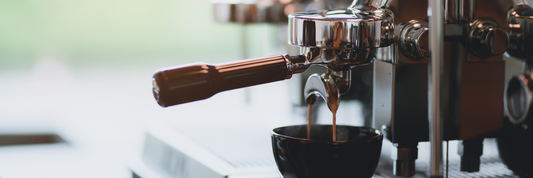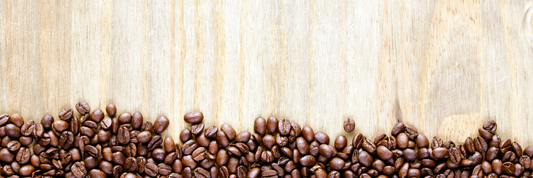A sturdy, common material, plastic is now required for many facets of daily life, including the food and beverage industry. But is plastic really that big of a deal? How much plastic have we used in food packaging? Why should the food industry care about plastic? To discover the answer, let's delve into the article today.
How Much Plastic Does the Packaging Industry Use?
The packaging industry consumes an enormous amount of plastic, with estimates ranging from 141 million to 143 million tonnes per year. That is nearly the weight of 141 million full-grown elephants!
Here are some key facts of plastic packaging:
- Global plastic packaging market size: expected to reach 119.02 million tonnes by 2028.
- Plastic reigns supreme in the packaging world, claiming roughly 40% of all materials used
- We each generate about 50 pounds of plastic packaging waste annually, equivalent to a small car!
- Plastic bags, those flimsy companions, see a staggering 5 trillion used every year, with barely any recycled
The Use of Plastic in Food Packaging
Plastic is a material that is widely used and has a variety of applications in the food and beverage packaging industry. These are some crucial points that you need to know.
What Type of Plastic Used in Food Packaging?
Food packaging is made of a variety of plastic types, each with unique qualities and uses:
- Polyethylene Terephthalate (PET): Widely used for bottled water, soda, and other clear containers. PET is lightweight, recyclable, and offers good barrier properties.
- High-Density Polyethylene (HDPE): Used for milk jugs, yogurt containers, and opaque bottles. HDPE is strong, durable, and offers good chemical resistance.
- Polyvinyl Chloride (PVC): Used for cling wrap, meat trays, and some bottled water. PVC is flexible, transparent, but raises concerns about BPA and phthalate leaching.
- Low-Density Polyethylene (LDPE): Found in bread bags, grocery bags, and produce packaging. LDPE is flexible, inexpensive, but not very strong and rarely recycled.
- Polypropylene (PP): Used for microwaveable containers, yogurt cups, and straws. PP is heat-resistant, versatile, but not always recyclable.
- Polystyrene (PS): Used for foam meat trays, egg cartons, and disposable cups. PS is lightweight, insulating, but not recyclable and poses environmental concerns.

What Are the Pros and Cons of Using Plastic in Food Packaging?
Due to its affordability and versatility, plastic is the material most frequently used for food packaging; however, not all of its impacts are positive.
Benefits of plastic in food packaging:
- Preservation and Protection: Plastic offers superior barriers against oxygen, moisture, and microbes, increasing food's shelf life, cutting down on food waste, and avoiding spoiling. This maintains food secure, aesthetically pleasing, and fresh for customers.
- Durable and Lightweight: Plastic's low weight results in lower fuel emissions and transportation expenses. In addition, it is strong and impervious to damage, safeguarding food during transportation and handling.
- Convenience and Versatility: Because plastic can be molded into a variety of shapes and sizes, it provides adaptable packaging solutions for a wide range of food items. In addition, it is single-use, resealable, and microwaveable, meeting a variety of requirements.
- Cost-effective: Plastic is typically less expensive to make and use than alternatives like glass or metal, which makes it more accessible to consumers as well as manufacturers.
Disadvantages of plastic in food packaging:
- Environmental Impact: The manufacturing and disposal of plastics have significant adverse effects on resource depletion, air and water pollution, and greenhouse gas emissions. The garbage made of plastic fills landfills to overflowing levels, and microplastics are ubiquitous, endangering wildlife and possibly making their way into the food chain.
- Health Concerns: Certain plastics, particularly those containing bisphenol A (BPA), have been linked to potential health issues such as endocrine disruption and hormone imbalances. The leaching of chemicals from plastic into food, especially at high temperatures, is another source of concern.
- Limited Recycling: While some plastics are recyclable, the process is generally complex and inefficient. Contamination and mixed materials reduce recycling rates even further, resulting in quite a bit ending up in landfills or the environment.
- Single-use Plastic: Single-use plastic packaging is more convenient, but it costs more. These products, which include bags, straws, and cutlery, are highly polluting due to their limited lifespan
How Much Plastic Does Food Packaging Use?
According to studies, around 40% of all plastics created since the 1950s have been used for packaging, with 41% of this being main food packaging (including 2 of 3 types of packaging: secondary and tertiary packaging), implying that overall food system plastic consumption would be substantially greater
Here's a breakdown of the numbers:
- Europe: Over 20 billion kilos of plastic are used for packaging, with 8.2 billion kilos dedicated to food products alone.
- US: In 2018, 14.5 million tons of plastic containers and packaging were generated, with food packaging representing a sizable portion.
- Global: Plastic packaging in the food sector is approximately 36 per cent of all plastics produced are used in packaging
- In 2019 alone, 12.5 million tons of plastic products were used in plant and animal production, and another 37.3 million tons were used in food packagin
- Plastic extends shelf life by 2-3 times, leading to 30-40% less food waste compared to unpackaged food.
- 70% of consumers consider plastic packaging to be convenient and hygienic, contributing to its widespread adoption.
Is It Becoming Problematic to Consume So Much Plastic?
The extensive use of plastic in food packaging is a difficult issue with severe consequences. These effects affected not just the environment but also consumers and food industry users of plastic food packaging.
Environmental Impact
- Overflowing landfills: Plastic garbage takes up valuable space and releases toxic chemicals into the land and water for millennia.
- Ocean pollution: Every year, millions of tons of plastic enter our oceans, causing entanglement, ingestion, and habitat devastation in marine life. The entire marine ecology is threatened by microplastics, which can be detected even in the deepest waters.
- Greenhouse gas emissions: The production and disposal of plastics release CO2 and other pollutants into the atmosphere, which is a major contributor to climate change.
- Depletion of resources: Fossil fuels, which are non-renewable resources, are the source of plastic and are running out quickly.
Consequences for Food Businesses
- Expenses: The cost of traditional plastic packaging has increased due to unpredictable plastic markets and rising oil prices. Enterprises must seek substitute resources, allocate resources towards recycling facilities, or confront escalated expenses that could potentially affect their earnings.
- Reputation of the Brand: Concerns over plastic pollution and sustainability are growing among consumers. Businesses that use a lot of unsustainable packaging risk damaging their brand and losing business to competitors who care about the environment.
- Regulations and Restrictions: Stricter laws are being put in place by governments regarding the usage of plastic, such as prohibitions on single-use plastics and tariffs on virgin plastic. This may make it harder for firms to comply with regulations and raise operating expenses.
Health Concerns
- Contamination by microplastics: Human blood, placentas, and even seafood have been reported to contain microplastics. Although their long-term health effects are still unknown, there are some possible dangers, such as reproductive problems, endocrine disruption, and inflammation.
- Chemical leaching: When plastics are heated to high levels, dangerous chemicals like phthalates and BPA can seep into food. Numerous health issues, including as cancer, developmental disorders, and hormone imbalances, have been connected to these substances.
- Indirect exposure: Plastic pollution damages wildlife and ecosystems, which may have an effect on the food chain and cause dangerous chemicals to build up in the food we eat.

What Should Business Should Know about Using Food Plastic Packaging?
The use of plastic has grown to be a major concern for both governments and consumers. This results in significant changes to plastic packaging in the future.
Customers Say Less to Plastic
Food packaging is significantly impacted by the growing number of environmentally concerned consumers. The following statistics show how much demand there is for sustainable solutions:
- According to new research by Trivium Packaging , nearly three-fourths (74 percent) of consumers are willing to pay more for sustainable packaging.
- A survey of 10,281 global consumers showed that: 78% agree that environmental sustainability is important, that the concept of sustainability appeals to them, and that they want to lead more sustainable lives.
- According to Statista, 2023 Sustainability Survey, 83% of Gen-Z consumers specifically seek products with recyclable or compostable packaging.
With the change in awareness food business will have to move forward and changing to keep up with customers behaviors changes.
The Ban on Plastic
In addition to the shift in consumer behavior, the ban on plastic is gaining traction. The following countries have outlawed single-use plastic:
- European Union (July 2021): plates, cutlery, straws, balloon sticks, cotton buds
- United Kingdom: plates, trays, bowls, cutlery, balloon sticks, polystyrene cups/food containers
- Canada: bags, straws (expanding to stir sticks, cutlery in December 2023)
- India (2018): single-use plastic bags less than 50 microns thick
- Rwanda (2008): all non-biodegradable plastic bags and packaging
The Canadian government has banned single-use plastics as of December 2022. Understanding the duration and applicability of the prohibition will aid businesses in future adaption.
Overview of Ban on Single-use Plastic In Canada
Sustainable Alternatives to Plastic Food Packaging
Switching to eco-packaging becomes a tendency for food business. There are numerous choices that business can consider, including:
- Bioplastics: These are derived from renewable resources like plant starch, bacteria, or algae. They can decompose naturally, reducing landfill waste and pollution.
- Compostable Materials: These break down into nutrient-rich compost under specific conditions, enriching soil instead of filling landfills.
- Paper Packaging: biodegradable, and recyclable material offers a strong contender against plastic. Paper can be molded into various shapes and sizes, making it versatile and lightweight.
Learn about important trends of food packaging that your food business needs to know
At Kimecopak, we provide solution to plastic packaging for food business and catering service in North America. We have a wide range of eco-friendly packaging, including:
- Paper To-go-box
- Paper Coffee Cups
- Biodegradable Straws
- Wooden Cutlery
- Disposable Plates
- Biodegradable Beer rings
All these type of packaging above are made from renewable or compostable resources, which is perfectly fit to replace plastic.
Futhermore, Kimecopak have many exclusive offers including: saving 5-7%, fixed price in 6 months, storage solution and scheduled shipping. For more information, please contact us via email: halo@kimecopak.ca or Kimecopak Facebook Fanpage



